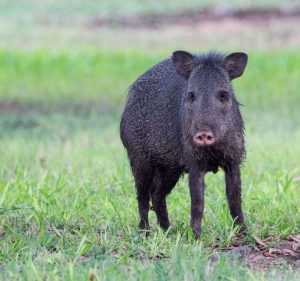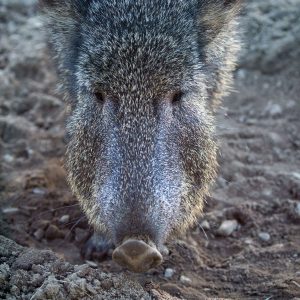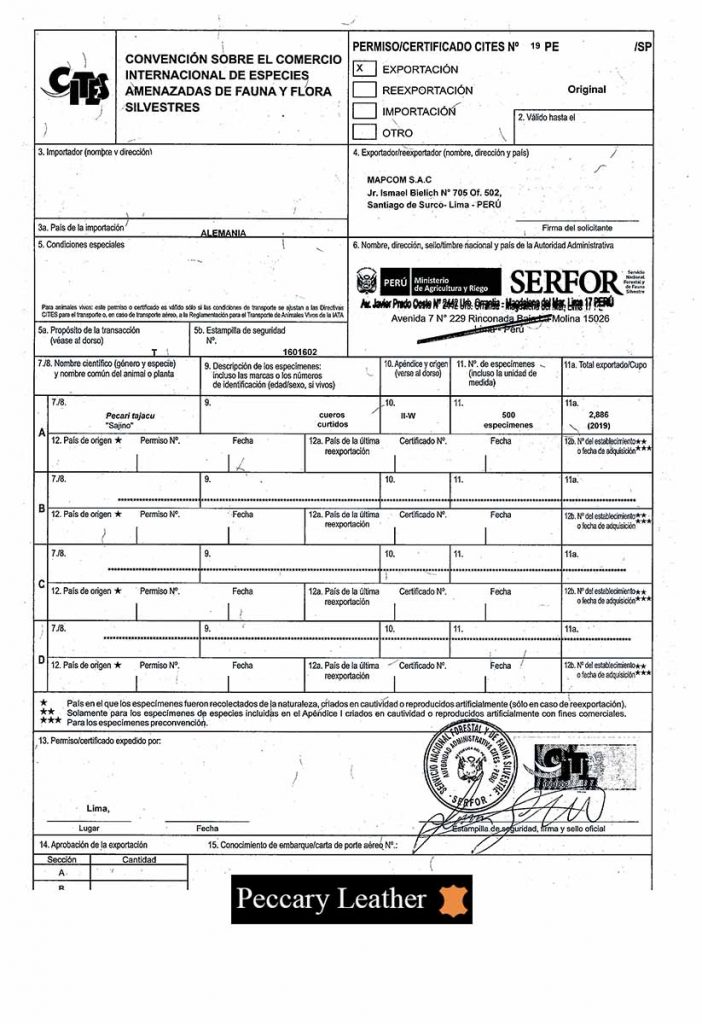Different Species And Endangered Ones
1. GENUS PECARI. Collared Peccary or Pecari Tajacu.

(Other names: French: Pécari à collier / German: Halsbandpekari / Spanish: Pecarí de collar
and Other common names: Javelina)
Distribution
Amazon Basin to North Argentina. South East USA (New Mexico and Texas), North East Mexico, Central Panama along with North West Colombia, Nicaragua to West Panama, South West Colombia and West Ecuador, South Guatemala, El Salvador, Honduras, North-South America (Colombia, Venezuela, The Guyanas, North East Peru, and Brazil)
They Have These Next Characteristics:
- Body Length: 80-105 cm / 2.6-3.5 ft.
- Shoulder Height: 30-50 cm / 1-1.6 ft.
- Tail Length: 2-4.5 cm / 0.8-1.8 in.
- Weight: 14-31 kg / 31-68 lb.
Status And Conservation:
These species appear in the CITES Appendix II, except populations of Mexico and USA which are not listed, are classified as of Least Concern on The International Union for Conservation of Nature and Natural Resources (IUCN) Red List. Although this species is widely distributed, and occurs in a variety of habitats, its status requires monitoring as it is ecologically important and helps maintain livelihoods of local people. That is the reason why the Peruvian institution SERFOR keeps a yearly quota from this species to make sure the hunting does not endanger them.
2. GENUS TAYASSU. White-lipped Peccary or Tayassu pecari.

(Other names: French: Pécari à lèvres blanches / German: Weißbartpekari / Spanish: Pecarí barbiblanco)
They Have These Next Characteristics:
- Body length: 90-139 cm
- Shoulder height: 40-60 cm
- Tail length: 3-6 cm
- Weight: 25-40 kg
White-lipped peccaries are dark brown or blackish in color. The coat is bristly, with the hairs running down the spine growing longer than the sides and forming a crest which is raised when the peccary becomes excited. The body is rounded and barrel-like, and the legs are long and slender. The face is long and ends with a pig-like nasal disc. Like the rest of the body, the head is dark brown, which makes the white markings surrounding the mouth and lower jaw stand out conspicuously.
Distribution:
Tayassu peccaries can be found in South West Colombia, Venezuela, The Guianas, Brazil, West Ecuador, East Peru, Bolivia, Paraguay, Argentina and a small Population between Nicaragua and Mexico.
Status And Conservation:
These species appear in the CITES Appendix II, which classifies them as Near Threatened on The IUCN Red List. They face multiple threats, foremost being wide-scale habitat destruction, and intensive subsistence and commercial hunting. Throughout most of their range, they are a vital source of protein and income for local people. However, within the last century the distribution of White-lipped Peccaries has been reduced by over 21%. In Peru, these species are protected by SERFOR and their yearly quota makes sure the hunting does not endanger them.
3. GENUS CATAGONUS: Chacoan Peccary.

Distribution:
They Have These Next Characteristics:
- Body Length: 96-117 cm / 3.2-3.9 ft.
- Shoulder Height: 52-69 cm / 1.7-2.3 ft.
- Tail Length: 3-10 cm / 1.2-4 in.
- Weight: 30-43 kg / 66-95 lb.
The Chacoan peccary’s bristly coat is a speckled charcoal or brownish-grey, interspersed with long guard hairs which may be up to 22 cm / 8.8 inches long. There is a whitish collar across the shoulders and under the chin, which is thinner and less distinct than that in the collared peccary. There is a black dorsal stripe which trails onto the tail. The head is extremely large, and the nose tapers to a snout disc made of cartilage. The long, donkey-like ears are covered with long, pale hair, as are the legs. The legs are relatively long and adapted for running, with dew claws only on the forelegs. The dorsal gland is prominent.
Status And Conservation:
These species appear in the CITES Appendix I, which classifies them as Endangered Species on The IUCN Red List. These species geographical distribution has been reduced and remaining populations are fragmented and declining- PLEASE DO NOT BUY THIS LEATHER. There is around 40% less of the Argentinian population of chacoans and it has disappeared from large areas even though the total population size is unknown to this day. Peru does not deal with this species.
CITES (the Convention on International Trade in Endangered Species of Wild Fauna and Flora)
CITES Is an international agreement between governments. Its aim is to ensure that international trade in specimens of wild animals and plants does not threaten their survival. This international agreement protects the peccaries in Peru (which is the only country with CITES Certification for this species) and all of the peccary leather comes from subsistence hunting.
The picture below is an example of the CITES certification Our company, PECCARY LEATHER SAC, do when trading or distributing peccary leather. This certificate means all the leather comes from subsistence hunting and are legally commercialized.


